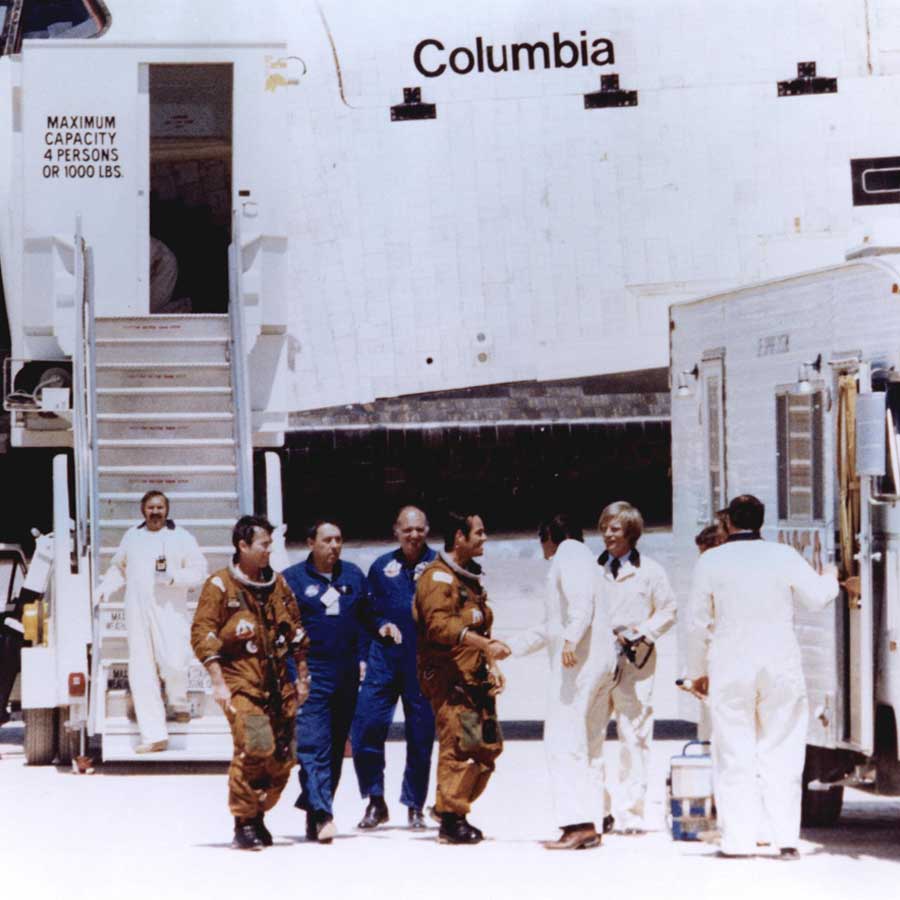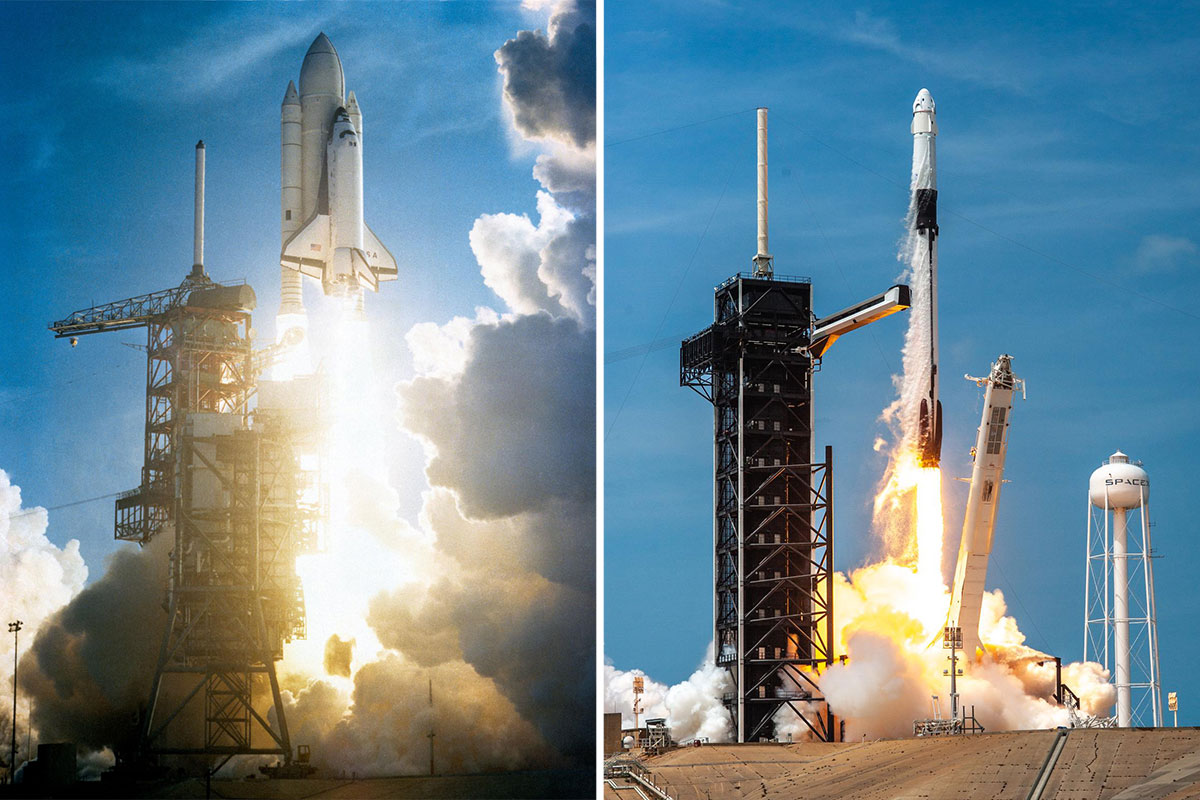The Dawn of the Shuttle Program 40 Years Ago
Published: April 2 2021 Updated: March 10 2025

A revolutionary ship launched for the first time 40 years ago. It launched like a rocket, handled like a spacecraft in orbit, and flew home like a glider. It was the first reusable spacecraft to carry humans to space. It demonstrated the success of new technologies and returned America to flight after the Apollo program ended.
The space shuttle was a ship like no other.
On April 12, 1981, astronauts John Young and Bob Crippen launched space shuttle Columbia from Kennedy Space Center. This launch was the first time that astronauts would be aboard a crewed spacecraft’s very first flight. The mission’s primary goal was for the Orbiter and crew to safely ascend, orbit, and return to Earth. In addition to meeting this goal, STS-1 also completed over a hundred flight test objectives. The safe touchdown of space shuttle Columbia and crew on April 14 set the Space Shuttle Program on the path to a lasting legacy.

The dream is alive.
John Young, Commander of STS-1
As we honor the 40th anniversary of STS-1, we reflect on the accomplishments of the program that it launched. The shuttle and personnel of the Space Shuttle Program gave humanity greater access to space through numerous missions. In the early years of the program, the space shuttles deployed many satellites into orbit and carried labs in their payload bays for experiments.
As the space shuttle continued to demonstrate mission success, NASA planned more ambitious missions. In 1990, space shuttle Discovery deployed the Hubble Space Telescope to begin studying the cosmos. After NASA found an issue with the telescope’s lens, five shuttle missions serviced the orbiting telescope to repair and improve the telescope. Since these missions, Hubble has fundamentally changed our understanding of the universe.
In 1998, space shuttle Endeavour met the Russian Zarya control module in orbit to begin construction on the International Space Station (ISS). Many space shuttle missions brought modules and astronauts to the ISS, fostering a new sense of international cooperation.
The Space Shuttle Program reached a close in 2011, ending 30 years of spaceflight. The last impacts of the program continue to this day. Less than ten years after the Space Shuttle Program ended, astronauts launched again from the same pad that STS-1 had launched. Lessons learned from the Space Shuttle Program were passed on to the Commercial Crew Program, including reusable spacecraft.

The Space Shuttle Program continues to inspire the future of space exploration. Learn more about this incredible achievement in spaceflight in person at Space Shuttle Atlantis®. In this immersive exhibit, stand nose to nose with space shuttle Atlantis, suspended in the air as it flew in space. Explore the legacy of NASA’s Space Shuttle Program through interactives, simulators and displays. Visit Space Shuttle Atlantis, included with admission to Kennedy Space Center Visitor Complex.